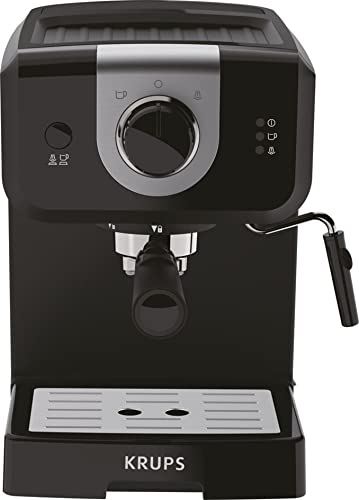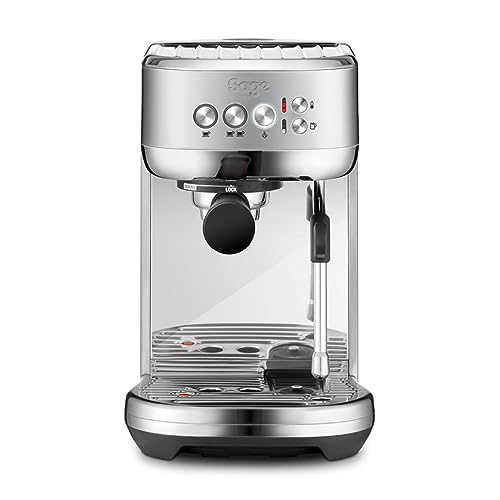The Ugly Reality About Espresso Maker
페이지 정보
작성자 Carmen 작성일25-02-22 00:22 조회4회 댓글0건관련링크
본문
 Espresso Maker - A Must-Have For Home Baristas
Espresso Maker - A Must-Have For Home BaristasEspresso is an intense, dark drink that is produced by pushing hot coffee through finely ground, tightly packed coffee grounds. It is the base of many popular coffee drinks at the cafe.
A skilled barista (also known as an travel espresso maker maker) controls a number of factors to make a perfect cup of espresso. These include the temperature of the water, the pressure of it and how tightly the coffee is packed.
Origins
The espresso maker is a machine that presses small quantities of near boiling water under a high pressure through finely ground coffee beans. The resultant beverage is stronger than drip coffee, and is more concentrated and served in smaller cups. This is a great choice for those who want an incredibly strong cup of coffee but want it fast!
The first espresso machines were made in the 19th century. At the time, coffee was a major business, but the process of making it took too long. People everywhere were hungry for the convenience of a cup in a snap!
Angelo Moriondo of Turin patented one of the first coffee machines in 1884. Its name was "New steam machine for the economical and instantaneous brewing of coffee beverage, method A. Moriondo."
Luigi Bezzerra, Desiderio Pavoni and other Milanese manufacturers improved and espresso makers adapted this machine. They introduced the portafilter as well as numerous brewheads, as with other innovations that are still associated with espresso makers today. The Ideale was their machine and it captivated the audience at the 1906 Milan Fair. Nine out of ten Italian homes have Moka Pots. Moka Pot.
Variations
espresso machine sale is more concentrated in flavor than coffee. It has a stronger flavor than. It works well with milk and creates café favorite drinks like cappuccinos and lattes. Its bold flavor also shines in baked goods recipes and even marinades.
There are four major kinds of espresso makers - visit this site, that include manual levers, semi-automatic, automatic, and super-automatic machines. Each type uses a different method of extraction of espresso.
A manual lever machine utilizes mechanical pistons that press water through the ground. It's the ideal compromise between manual control and mechanized consistent. You'll still have the grind and tamp shot for yourself, but you can control water temperature and pressure much better.
Moka pots are a second manual espresso maker that operates similarly to a modern pump-driven espresso machine. In an airtight, sealed tank, boiling water creates steam. This steam is then forced into a basket of ground coffee, then through an iron filter into the top cup. These machines are less expensive but they can only generate 1-1.5 bars of steam pressure. This isn't enough to make espresso.
Ingredients
With a little effort and practice, espresso makers can help baristas at home make cafe-style drinks like cappuccinos, lattes and flat whites. You can add flavored extracts or syrups to espresso shots to make a luscious drink such as an espresso martini.
To make a good cup of espresso, you need high-quality beans, fresh milk and sugar. To ensure a consistent extraction, look for coffee beans that bear a special espresso label. Finely grind them. You can try various roasts until you discover the one that is perfect for your taste.
There is also a burr grinder, which grinds the beans to a consistent texture. The buy espresso machines machine has a portafilter which holds the grounds, and the tamper, which is used to squeezing the coffee into a tightly packed.
Finally, you'll need a set of espresso cups as well as a steamer or an ice maker to create the silky aerated milk that is characteristic of espresso drinks. Some machines have steam wands to assist in the process. You will also need to clean your machine on a regular basis, which involves running vinegar and water through the system.
Techniques
Espresso brewing relies on creating pressure that allows for rapid extraction of intense flavors from finely-ground dark-roast and dark-roast beans packed into a "puck." This method of brewing creates the strongest coffee shot known as espresso. When properly prepared, espresso features a luxurious crema (or dense foam) over the top.
As opposed to the Moka Express that uses heat to purify water through coarsely ground coffee, most espresso makers use highly pressurized water that is forced through small grounds with high temperatures. This makes an espresso-like beverage that can be diluted with milk or water to make different drinks, like cappuccinos or lattes.
The Moka Express is a cheap easy-to-use appliance. Other espresso machines are more complex, expensive and come with a variety of drinks. The most popular machines, however, are Italian-designed lever machines that use spring-loaded arms to dispense hot water from a cylinder to the portafilter. A barista operating such a machine is able to control the timing of the shot, while adjusting variables like grind size and water temperature on a shot-by-shot basis to achieve the best results. These machines were key in bringing espresso to wider prominence across Italy and Europe.
Equipment
A good espresso maker has to be able to extract both soluble and insoluble solids from tightly packed, finely ground coffee. This process is made much easier by the use of pressure and controlled variables, such as temperature and grind size. The flavor is also the result from a variety of elements, including the beans used, as well as the method in which they are made.
There are a variety of espresso machines, but the semiautomatic is most commonly used. It utilizes an electric pump to force the water through the grounds. It also permits the user to do the grinding and tamping. These machines are among the most affordable, but they're not as reliable as spring pistons, or other designs made by hand.
The lever models which are more expensive include a calibrated cylinder that does all the work. They are a little more forgiving than a spring piston machine however they still require some expertise to operate properly. They usually require a lot of maintenance, requiring you to preheat and disassemble the portafilter as well as the piston each time.

댓글목록
등록된 댓글이 없습니다.
